Gym Today, Jam Tomorrow
POSTED ON 03/01/2011For the last few years I’ve said goodbye to booze in January. I’ll be doing the same again from today. It’s good to remind myself every so often that I can (and in my job I need to). I also feel so much better for it in the mornings. Instead of having to drag my sorry self out of bed, there’s a spring in my step. Drinking wine every day is an easy habit to acquire. Breaking the habit is easier said than done and don’t believe anyone who tells you they can do it if they want to unless they actually do it. The proof is in the not drinking.
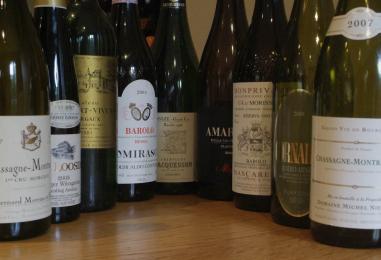 Farewell, my friends
Farewell, my friends
It’s tough at first, but as each year, and each day, goes past, it gets easier. Instead of feeling like a man about to face the electric chair, I look forward to it. It used to be a badge of honour to stay dogmatically dry for the month, the whole month and nothing but the month, but not any more. With a birthday party to go to and a friend coming to stay, there’ll be a wet weekend, a break from the break. No big deal. It’s not a competition. On the other hand, I won’t be looking for dinners out or excuses to wet the whistle.
People sometimes say, well you go to tastings, so what’s the difference between that and drinking? The difference is that you don’t go to tastings to drink, you go to taste. For sure you absorb some alcohol, but it’s not the same as drinking. You drink for pleasure, in good company and you swallow. There’s a world of difference between the tasting you do for your job and drinking for enjoyment.
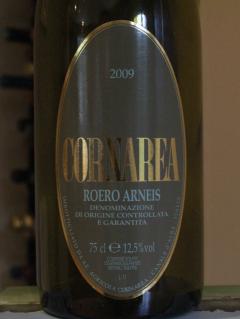 2009 Cornarea Arneis
2009 Cornarea Arneis
So that’s it, no more, no less, no preaching, no sermonising, no moralizing, no evangelizing, no proselytising, no shoulds, no shouldn’ts. If you want some advice on whether to give up or not, I would say give it a go: it’ll do you the world of good, but there’s no need to be holier-than-though about it. Pat yourself on the back by all means, but do it quietly. Make some fresh, home-made juices and do it with someone else if you can so that you can support each other. If it works for you, let me know about your experience and I’ll publish a few comments, whether you’ve tried and succeeded, or given it a go and succumbed.
THESE ARE A FEW OF MY FAVOURITE DRINKS
Now, just to remind myself why I’m involved in wine in the first place, here are a few festive wine highlights I brought up from the cellar. That’s another advantage of giving up in January. In the run-up to Christmas and the week after, you can indulge your epicurean self to the hilt. Knowing that I’m giving up for a month or thereabouts is all the incentive I need to drink some of my smartest wines. No samples, no spitting.
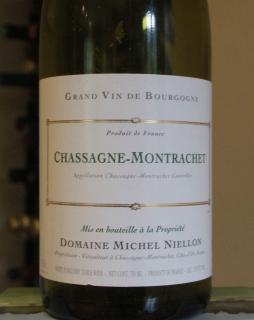 2007 Chassagne-Montrachet, Domaine Niellon
2007 Chassagne-Montrachet, Domaine Niellon
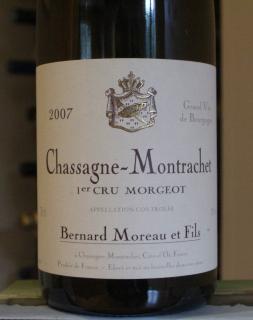 2007 Chassagne Montrachet Morgeot 1er cru, Domaine Bernard Moreau
2007 Chassagne Montrachet Morgeot 1er cru, Domaine Bernard Moreau
204 Barolo Conterno Fantino
This was the first of the little tryptich of Barolos I indulged in over the festive period. Bought from Enotria ‘en primeur’, it was quite gorgeous. Still young for sure, but with that classic nebbiolo perfume and a seductive purity of deep dark fruit flavours all encased but not imprisoned in a perfect framework of sinewy tannins and juicy acidity. My kind of wine.
2009 Arneis, Cornarea, Piedmont
I had recently bought some of this from Berry Bros (and the nebbiolo) after tasting it at their autumn tasting, and I also included it as one of my Independent 50 Best for Christmas. Quite gorgeously fresh and fragrant, its refreshing spritz acts as a counterpoint to the wine’s voluptuously ripe apricot-sweet fruit richness; full-bodied and flavoured and yet delightfully dry (£15.95, Berry Bros. & Rudd; bbr.com; 0800 280 2440)
2007 Chassagne Montrachet, Domaine Niellon
Bought recently at Loeb, £34, along with an equally impressive 2007 Chassagne Montrachet Morgeot 1er cru, Domaine Bernard Moreau (gorgeous Morgeot), £47.50. I savoured every delicious drop of this taut, minerally young white Burgundy, whose apple and peach fruit flavours combine with a leesy crafted character in such mouthwatering fashion that I found it hard to resist opening another bottle. I only bought six so I resisted.
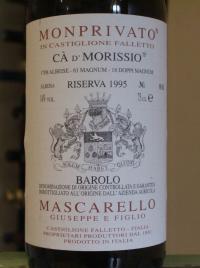 1985 Barolo Monprivato Cà d’Morissio, Giuseppe Mascarello
1985 Barolo Monprivato Cà d’Morissio, Giuseppe Mascarello
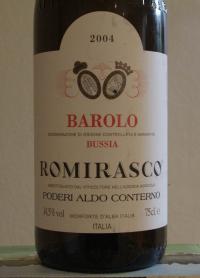 2004 Barolo Bussia, Romirasco, Aldo Conterno
2004 Barolo Bussia, Romirasco, Aldo Conterno
1985 Barolo Monprivato Cà d’Morissio, Giuseppe Mascarello
Ultra-traditional in style, this is one for Barolo traditionalists. Still incredibly youthfully dark in colour, its savoury aromas and bright intense plummy fruit are framed by a solid core of muscular tannins and a twist of astringency. Only drank half a bottle on the first day, which was the right thing to do because by the following day, everything had softened, and eased and relaxed. Just perfect.
1996 Jacquesson Avize Grand Cru
Wow. This little treat had been lurking in the cellar for the 6 or 7 years since I brought it back from a trip to Champagne in the early 2000s. On New Year’s Eve, it was deep bronze in colour and still twinkling brightly, it had a wonderfully mature yeast and sourdough toasty quality that was more like a great wine with bubbles than just another bubbly; finishing nutty with a crème fraîche-like texture and luxurious savour.
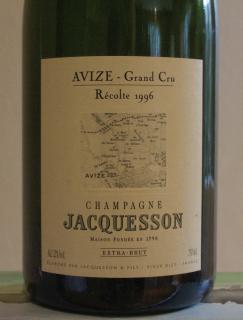 1996 Jacquesson Avize Grand Cru
1996 Jacquesson Avize Grand Cru
2004 Barolo Bussia, Romirasco, Aldo Conterno
There’s good Barolo and then there’s great Barolo and this was great Barolo. If I was awarding points I’d give it 100/100. Where the Mascarello still had that hard edge and bitter twist of traditional nebbiolo, there was nothing hard or bitter about this extraordinary wine. Wonderfully aromatic, the fruit is richly concentrated with all manner of sour cherry and damsony flavours but above all a weight and texture that lingers seemingly for ever. Still youthful but drinking beautifully, you feel that this remarkable red has a good 20 year life ahead of it. Hope so as I still have most of the case, bought from Liberty, tucked away.
1981 Château Durfort Vivens
A record of exactly when I acquired this Bordeaux deuxième cru classé (or second as it says on the label) at auction is lost in the mists of time, but it’s almost certainly been lurking in some dark corner of the cellar for a couple of decades. I was sure it would be past its best since 1981 was overshadowed by the following two vintages, but no. Although garnet in colour, it was bright and promisingly aromatic with a scent of rosehip and damp earth; it was silky soft and mature but there was an underlying sweetness of fruit still there that was surprising. With a simple, well-seasoned roasted sirloin, it worked a treat.
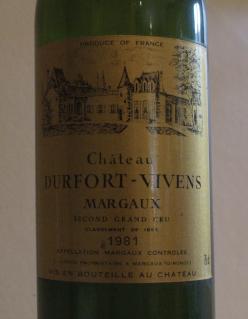 1981 Château Durfort Vivens
1981 Château Durfort Vivens
2003 Dr.Loosen ürziger Würzgarten Riesling Auslese (half)
Although 2003 was the year of the torrid summer that burned the acidity off so many wines, much Mosel riesling managed to retain its freshness, combining, as here, with an exceptional degree of exotic richness. This featherweight riesling from Ernst Loosen, and bought from Howard Ripley, was outstanding with a piece of Spanish sheep’s cheese, its exotic limey richness matching the creaminess of the cheese while the acidity kept things fresh and lively.
2006 Allegrini Amarone
Well, having been given a bottle along with a book of recipes by Marilisa Allegrini, it seemed only fair to follow the Ruth Rogers’ recipe for risotto with amarone and extravagantly, to use the Allegrini Amarone. The risotto was simple and delicious, so here’s the recipe. Instead of following it to the letter, I caramelized and crisped the red onions, kept them separate and added them to crisp up the risotto at the end but you can do it either way. The wine itself is still young and oaky, so I’d recommend hanging on to it, and, if you want to be less extravagant, use e.g. a Valpolicella, an Aussie or Chilean shiraz for the risotto.
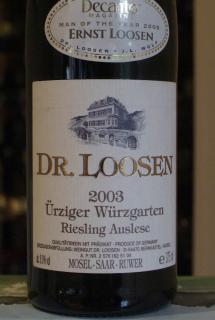 2003 Dr.Loosen ürziger Würzgarten Riesling Ausles
2003 Dr.Loosen ürziger Würzgarten Riesling Ausles
Risotto with Amarone
Ingredients (serves 6)
300 ml chicken stock
150 g butter at room temperature
2 medium red onions peeled and chopped
300g Carnaroli rice
600 ml Amarone
150g Parmesan cheese, grated
a little double cream (optional)
sea salt
black pepper
Heat the chicken stock and check the seasoning. Melt two-thirds (100g) of the butter in a large, heavy-bottomed pan, and gently fry the onion for about 20 minutes until light brown. Add the risotto rice and stir to coat: this only takes a minute. Turn up the heat and pour in 175 ml of wine and let it reduce to a syrup. Add the hot chicken stock, ladle by ladle, stirring all the time, only adding more when the rice has absorbed the previous addition. When the rice is almost cooked, and all the stock has been absorbed, gradually add the remaining wine: the rice should immediately take up the colour of the wine. Add half the Parmesan cheese, the remaining butter (or a little cream) and season, taking care not to over-stir. Serve with the rest of the Parmesan.
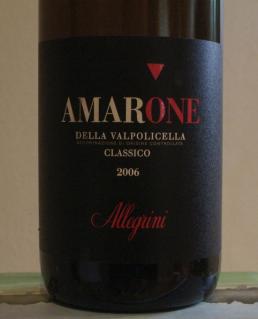 2006 Allegrini Amarone
2006 Allegrini Amarone
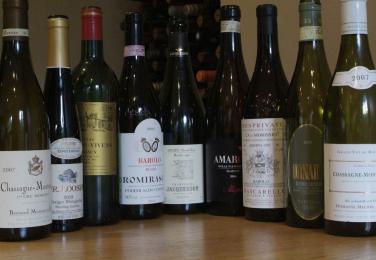 Jam Yesterday
Jam Yesterday

